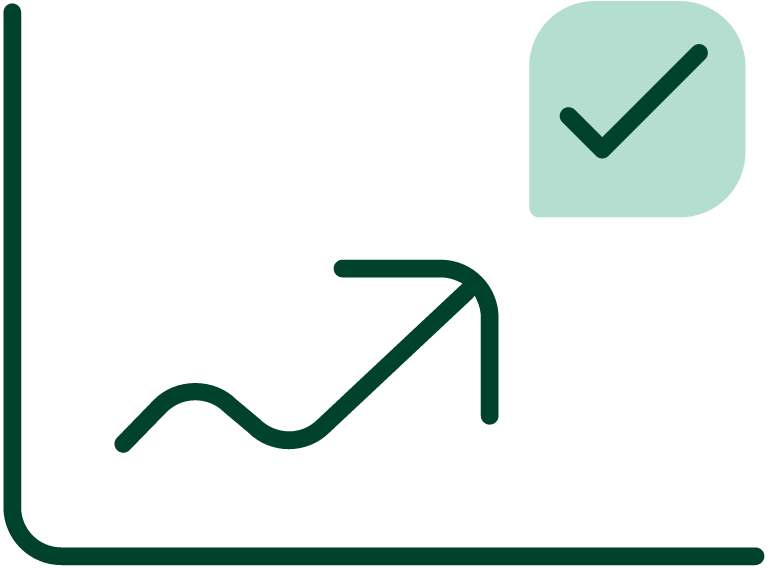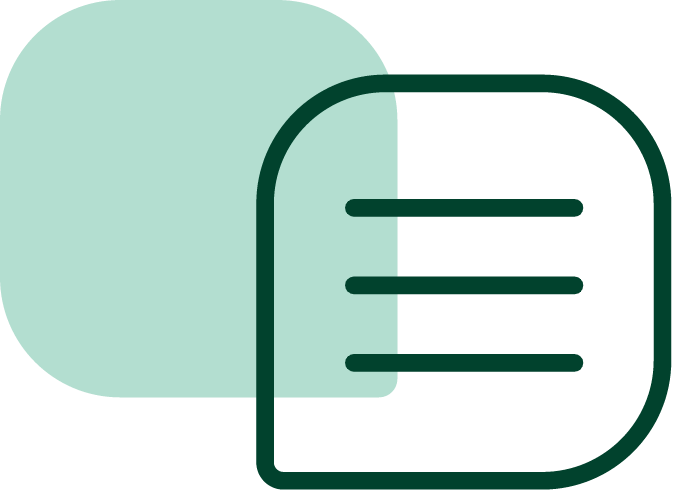In today’s competitive business environment, maintaining a healthy cash flow is critical. One of the most effective ways to achieve this is by optimizing your operating cycle. The operating cycle plays a critical role in the financial stability of any business. In this article, we attempt to explain the connection between the operating cycle and A/R, identifying bottlenecks, and implementing strategies to improve efficiency, you can achieve faster cash flow and enhanced financial performance.
Understanding and improving the processes that influence your business operating cycle—especially accounts receivable (AR) management—can significantly enhance financial performance. Let’s dive into the key aspects of the operating cycle and how you can streamline it for faster cash flow.
Importance of the Operating Cycle
The operating cycle, also known as the business operating cycle, measures the time it takes for a company to purchase inventory, sell products or services, and collect payments from customers. This cycle is crucial in evaluating a company’s efficiency in managing its working capital. A deeper understanding of the cash flow cycle and its impact on working capital is essential for improving your operating cycle efficiency.
A shorter operating cycle ensures quicker cash inflows, enabling businesses to meet their obligations, confidently purchase inventory, and invest in growth opportunities.
Calculate Operating Cycle
To calculate the operating cycle, you can use the operating cycle formula:
Operating Cycle = Days Inventory Outstanding (DIO) + Days Sales Outstanding (DSO)
In this formula:
- DIO measures the average number of days inventory is held before being sold.
- DSO represents the average time taken to collect payments after a sale.
Understanding the operating cycle accounting principles behind this calculation can help identify inefficiencies and areas for improvement. Additionally, businesses can use this formula to benchmark their performance against industry standards, providing a clearer picture of operational health. Regularly monitoring changes in the operating cycle can reveal underlying issues in inventory management or collections processes, prompting timely corrective actions. For example, an increasing DSO might indicate challenges in receivables management, while a high DIO could suggest inventory overstocking or slow sales.
The Connection Between the Operating Cycle and AR
Managing full cycle accounts receivable effectively means more than just sending invoices and waiting for payments. It involves:
- Clear communication with customers.
- Proactive follow-ups and reminders.
- Leveraging technology to streamline invoicing and payment processes.
- Ensuring invoices are accurate and delivered promptly to avoid payment delays.
- Regularly analyzing customer payment trends to identify risks or opportunities.
- Implementing credit policies that align with business goals and customer profiles.
- Using data-driven insights to forecast cash flow and improve decision-making.- Clear communication with customers.
- Proactive follow-ups and reminders.
- Leveraging technology to streamline invoicing and payment processes.
Identifying A/R Management Bottlenecks
Before implementing strategies to improve your operating cycle, it’s essential to pinpoint the bottlenecks in your A/R processes. Common issues include:
- Late Payments: Customers delaying payments can significantly lengthen your operating cycle. This happens for a number of reasons, but being able to identify at least one underlying cause, can help a lot.
- Disorganized Invoicing: Errors or delays in invoicing can confuse customers and delay payments.
- Inefficient Processes: Manual A/R processes are time-consuming and prone to errors, increasing the risk of missed payments.
- Inefficient Follow-ups and Reminders: While related to inefficient processes, this common bottleneck deserves its own focus. Delayed or inconsistent follow-ups can result in missed payment opportunities and prolonged collection times. They are also one of the major reasons for late payments, the first point mentioned in that section, in most organizations.
If you can’t identify any specific bottle necks in your A/R management, you may have a problem with lack of visibility, meaning no real-time insights into A/R performance making it difficult to identify issues or track progress. By addressing these bottlenecks or the lack of visibility, you can improve cash flow and reduce the overall length of your operating cycle.
Strategies to Reduce the Length of Your Operating Cycle
Here are some actionable strategies to optimize your business operating cycle and enhance AR management:
1. Automate A/R Processes
Automation is one of the most effective ways to streamline A/R operations, or any business process for that matter. Automating tasks like invoice generation, reminders, and payment reconciliation can reduce errors and save time. Many modern AR platforms also provide tools to calculate the operating cycle and monitor its progress in real time.
2. Offer Multiple Payment Options
Simplify the payment process for your customers by offering a variety of payment options, such as credit cards, ACH transfers, and digital wallets. Letting customers choose their payment method will reduce delays because they will choose the one they are most comfortable with. They will also be more comfortable paying digitally which is another factor in reducing payment delays.
3. Establish Clear Payment Terms
Set clear and concise payment terms in your contracts to minimize confusion. Ensure that customers are aware of payment deadlines, late payment penalties, and acceptable payment methods. This clarity can help reduce disputes and encourage timely payments.
4. Monitor A/R Performance Metrics
Use key performance indicators (KPIs) to track your A/R performance and operating cycle accounting metrics of both your team as a whole and individual team members. Metrics like DSO, collection efficiency, and A/R turnover provide valuable insights into your A/R processes and help identify areas for improvement.
Streamline Your A/R Processes Today
Gaviti’s accounts receivable automation solution streamlines your A/R processes and helps your team work better. Make better credit decisions, lower DSO, and reconcile payments with near perfection. Schedule a demo to learn more.
Schedule a Product Demo5. Foster Strong Customer Relationships
Maintaining good relationships with customers can encourage timely payments. Proactive communication, personalized follow-ups, incentives for early payments, and a focus on customer service can strengthen these relationships and improve payment reliability.
6. Conduct Regular Reviews of A/R Processes
Periodic reviews of your AR operations can help identify inefficiencies or outdated practices. Use these reviews to implement improvements and ensure that your AR processes align with your business goals.
7. Invest in Training for Your AR Team
Equip your AR team with the skills and knowledge needed to handle full cycle accounts receivable efficiently. Training in areas like dispute resolution, communication, and the use of AR software can boost productivity and effectiveness.
For further insights and practical tips on shortening your cash conversion cycle, see the guide 5 Tips to Reduce Your Cash Conversion Cycle.
Setting Your Business on a Path to Faster Cash Flow
Optimizing your operating cycle is not a one-time effort but an ongoing process. By focusing on A/R management and leveraging tools and strategies to reduce the length of your operating cycle, you can unlock faster cash flow and improved financial health.
Consider the following steps to set your business on a path to success:
- Adopt Technology: Implement A/R automation tools that integrate seamlessly with your existing systems. Depending on the size for your business, you should also consider Autonomous accounts receivable technology, the next generation of automation.
- Set Realistic Goals: Establish measurable goals for reducing your operating cycle and track progress regularly. Effective goal setting mandates that goals should be ambitious but obtainable.
- Engage Your Team: Involve your finance and A/R teams in identifying challenges and implementing solutions. The people on the ground often see things that managers don’t. So listen and be prepared to be surprised.
- Focus on Continuous Improvement: Regularly review your processes and make adjustments as needed to maintain efficiency.
Take the time to calculate your operating cycle and analyze the results. With a focus on optimizing full cycle accounts receivable processes and leveraging modern AR tools, your business can reduce DSO, increase productivity, and set itself up for long-term success.
How Gaviti Helps Optimize the Operating Cycle
Gaviti is designed to revolutionize accounts receivable management and, in turn, optimize your operating cycle. By automating key processes and providing actionable insights, Gaviti helps businesses reduce their DSO and improve cash flow. Here are some of the standout features:
- Automated Workflows: Gaviti’s platform automates repetitive tasks like sending payment reminders, follow-ups, and escalations when necessary. This ensures timely customer engagement without manual intervention except when necessary.
- Real-Time Insights: With Gaviti, businesses gain access to dashboards that provide a comprehensive view of their A/R performance, updated in real time, helping you calculate the operating cycle and identify areas for improvement.
- Customizable Rules and Reports: Tailor A/R workflows and create detailed reports to meet your unique business needs, ensuring better alignment with operating cycle accounting goals.
- Seamless Integration: Gaviti integrates with your existing ERP or financial systems, ensuring a smooth transition and minimal disruption to your current processes. Gaviti streamlines the entire order-to-cash cycle, ensuring efficiency from the moment an order is placed to the final payment collection.
- Enhanced Collaboration: The platform fosters inter and intra collaboration among finance, sales, and customer support teams by centralizing communication and data within a single interface.
- Security and Compliance: With enterprise-grade security measures, including encryption and role-based access controls, Gaviti ensures that your financial data is safe and compliant with regulations.
By leveraging Gaviti’s robust features, businesses can shorten their operating cycle, enhance AR efficiency, and set a solid foundation for sustainable growth. Schedule a demo today to see if Gaviti is right for you.





















